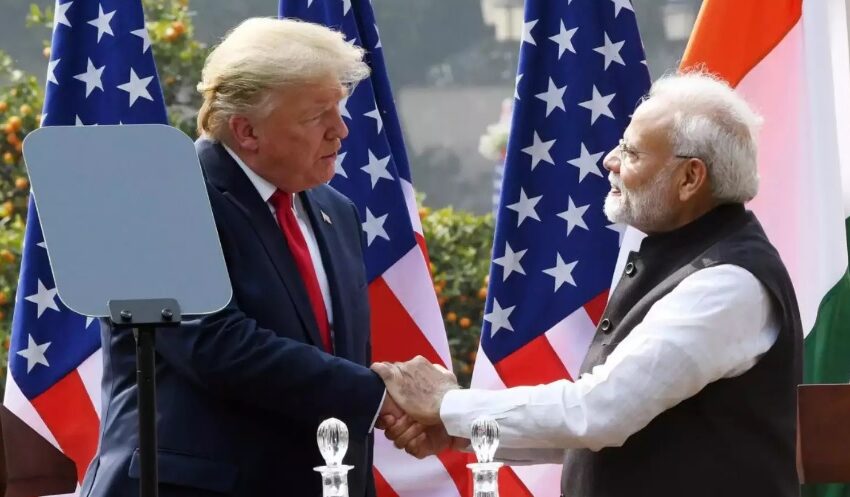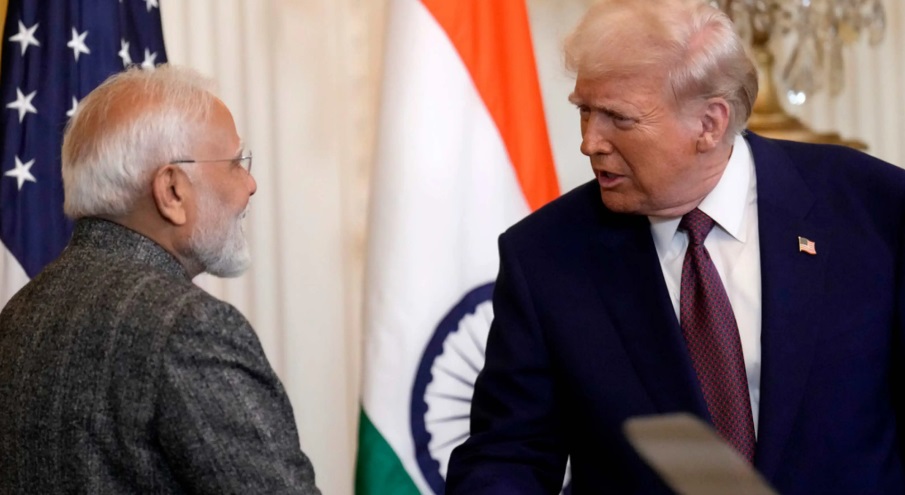
Global Reactions to Narendra Modi’s US Visit: PM-Trump Meeting and Trade Deal Take Center Stage
During their meeting, PM Modi and Trump focused on trade, tariffs, and defence cooperation, targeting a $500 billion trade goal by 2030.
PM Narendra Modi’s US visit: PM Narendra Modi and US President Donald Trump focused on trade, tariffs, and defence ties during their White House meeting on Thursday. While Donald Trump had previously threatened to impose tariffs, the two leaders signalled a willingness to negotiate, raising hopes of possible concessions from both sides.
Donald Trump, known for his deal-making persona, admitted that PM Narendra Modi was a “much better negotiator” than him. In a lighthearted moment, Modi played on Trump’s iconic “MAGA” slogan, saying he was committed to “Make India Great Again”.
The meeting between the two world leaders has drawn significant attention from global media as well, with various outlets analysing key aspects of their discussions.
Trade and economic ties
News agency Reuters reported that Narendra Modi and Donald Trump set an ambitious target to double bilateral trade to $500 billion by 2030. Their discussions included key sectors such as artificial intelligence, semiconductors, and strategic minerals, with both leaders emphasising the need for a mutually beneficial trade agreement. However, another news agency Associated Press highlighted Trump’s criticism of India’s high import duties, calling them “very unfair”, and reiterated his stance on implementing reciprocal tariffs.
Defence and strategic partnerships
The Financial Times reported that the US is looking to strengthen military ties with India, including potential sales of F-35 fighter jets under a 10-year defence cooperation plan. This move aligns with Washington’s broader strategy of countering China’s influence in the Indo-Pacific region.
Immigration and human rights
The issue of illegal immigration also featured prominently. According to Reuters, Modi assured that India is willing to take back its nationals living illegally in the US and called for joint efforts to dismantle human trafficking networks. Notably, both leaders avoided discussing sensitive issues such as minority rights, drawing some criticism from advocacy groups.

India to boost oil imports from US
News agency Bloomberg reported that India is seeking to boost oil and gas imports from the US in an effort to reduce the trade imbalance between the two countries and avoid potential retaliatory tariffs.
“I think we purchased about $15 billion in US energy output,” Bloomberg quoted foreign secretary Vikram Misri as saying at a media briefing in Washington on Thursday.
“There is a good chance that this figure will go up as much as $25 billion,” he added.
Misri added that “it is entirely possible increased energy purchases will contribute to impacting the deficit between India and US.”
Global perspectives on the meeting
The BBC reported that the meeting was largely symbolic, with little substantive progress on trade disputes. However, it acknowledged that both leaders used the opportunity to reinforce their commitment to strategic ties and shared geopolitical interests.
Al Jazeera focused on human rights concerns, criticising both leaders for sidestepping discussions on democratic values and press freedom.
News agency AFP emphasised the broader geopolitical context, noting that the meeting was part of a larger US strategy to counter China’s influence in the region. The agency also pointed out that despite strong rhetoric, there was little immediate progress on resolving trade frictions.
ABC News reported on domestic reactions in both countries, reporting that while the meeting was seen as a diplomatic success, opposition leaders in India and the US criticised the lack of concrete agreements. The network also noted that Modi’s outreach to the Indian diaspora in the US was a key aspect of the visit.
CNN reported that Trump’s tariffs could hit developing countries particularly hard, especially India, Brazil, Vietnam and other Southeast Asian and African countries, given that they have some of the widest differences in tariff rates charged on US goods brought into their countries compared to what the US charges them.
“For instance, in 2022, the US average tariff rate on imports from India was 3%, whereas India’s average tariff rate on imports from the US was 9.5%,” it reported, citing World Bank data.


